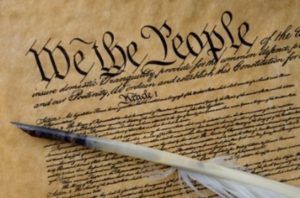Donald Trump had zero government experience when he became president of the United States.
He seemed to think he could step into the presidency, assume the role of CEO and everyone would do his bidding.
He is now finding out that it doesn’t work quite that way. He is learning in real time that the founders established a government that limits presidential power. They created a government that allows two other branches to rein in an executive branch that could overstep its authority.
Congress is controlled by men and women who belong to the same political party as the president. Thus, the legislative branch might roll over. This leaves the final check to the judicial branch, which is flexing its muscles in this struggle over Trump’s executive order that restricts travel to the United States from those who hail from seven Muslim-majority nations.
The struggle now seems headed to the Supreme Court. The nation’s highest court likely will get to decide whether to uphold two lower-court rulings that have stalled the execution of Trump’s executive order.
If the Supremes uphold the earlier rulings — either with an actual ruling or a tie vote created by the unfilled vacancy — then the president will have to consider another way to “make America safe again.”
Perhaps the next tactic he employs will be considered more carefully and executed with more thought than the cluster-fudge he rolled out with this refugee ban.
Will any of this humble the president? Will it give him pause to consider his next action? Probably not, but it still gives me some comfort to know that the founders knew how to create a government that works.
And just for the record, if the Supreme Court rules in Trump’s favor and overrules the lower courts, then I’ll consider that — as well — to be a demonstration of a functioning federal government.
However, my concern were that to occur would be that it would embolden a president to misread the limitations on power that the founders wrote into the framework that built this nation.
